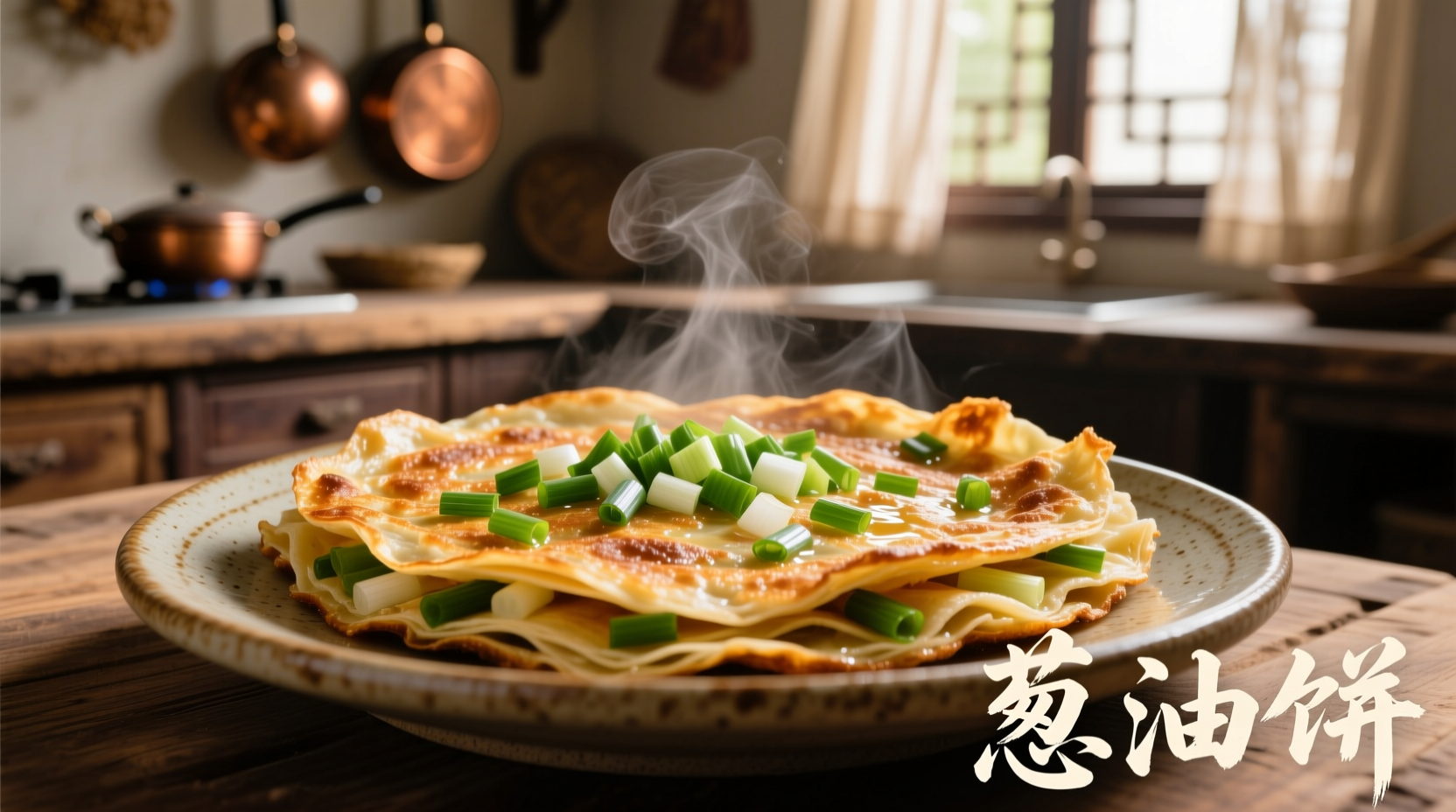Discover how to create authentic Chinese green onion pancakes that rival your favorite restaurant's version. This comprehensive guide reveals the precise techniques, ingredient ratios, and cooking methods that transform simple pantry staples into a crispy, flavorful delight. Whether you're a beginner cook or an experienced chef looking to perfect this classic dish, you'll learn everything needed to achieve restaurant-quality results at home.
The History and Cultural Significance of Green Onion Pancakes
Green onion pancakes trace their origins to Northern China during the Tang Dynasty (618-907 AD), where wheat-based foods were more common than rice. Historical records from the Song Dynasty (960-1279 AD) document "cong you bing" as a popular street food among merchants and travelers. The dish spread throughout China during the Ming Dynasty (1368-1644) as trade routes expanded, with regional variations emerging across different provinces.
| Historical Period | Development | Regional Spread |
|---|---|---|
| Tang Dynasty | First documented as street food | Northern China |
| Song Dynasty | "Cong you bing" appears in written records | Spread along trade routes |
| Ming Dynasty | Regional variations emerge | Nationwide popularity |
| 20th Century | Global spread through Chinese diaspora | Worldwide adaptation |
Essential Ingredients for Authentic Green Onion Pancakes
The beauty of green onion pancakes lies in their simplicity. You only need a handful of ingredients, but each plays a crucial role in achieving the perfect texture and flavor. For the best results, use fresh green onions (scallions) with vibrant green tops and crisp white bases. The quality of your flour matters significantly—all-purpose flour works well, but some Chinese chefs prefer a blend of all-purpose and cake flour for extra tenderness.
Step-by-Step Preparation Process
Dough Preparation
Start by mixing 3 cups of all-purpose flour with 1¼ cups warm water and ½ teaspoon salt. Knead for 8-10 minutes until smooth and elastic. The dough should be slightly softer than pasta dough but not sticky. Cover and let rest for 30 minutes—this crucial step allows the gluten to relax, making rolling easier and creating better layering.
Creating the Flavorful Filling
While the dough rests, prepare your green onions. Use 1½ cups thinly sliced green onions (both white and green parts). In a small bowl, combine the onions with 2 tablespoons vegetable oil, 1 teaspoon salt, and ½ teaspoon five-spice powder (optional but traditional). The oil coats the onions, preventing excess moisture from making your pancakes soggy during cooking.
Layering Technique for Maximum Flakiness
This is where most home cooks go wrong. After rolling your dough into a large circle, brush it with a thin layer of oil (not water), then evenly distribute the green onion mixture. Roll the circle into a tight cylinder, then coil it into a spiral. Flatten gently with your palm before rolling out again. This technique creates dozens of delicate layers that separate during cooking, producing that signature flaky texture.

Avoiding Common Green Onion Pancake Mistakes
Many home cooks encounter issues with soggy centers, uneven browning, or poor layering. The most frequent error is using too much filling, which prevents proper layer separation. Another common problem is rolling the dough too thin after coiling, which compresses the layers. For optimal results, maintain a ¼-inch thickness when rolling your final pancake shape.
Cooking Methods Compared
While traditional preparation uses a flat griddle or wok, modern kitchens offer several cooking options:
- Cast Iron Skillet: Provides even heat distribution for consistent browning
- Non-Stick Pan: Easier for beginners but may not achieve maximum crispness
- Electric Griddle: Ideal for cooking multiple pancakes simultaneously
- Air Fryer: Creates surprisingly crispy results with less oil (though texture differs from traditional)
Serving Suggestions and Dipping Sauces
Green onion pancakes taste best when served immediately after cooking. Pair them with traditional Chinese dipping sauces like black vinegar with a touch of chili oil, or create a simple soy-vinegar mixture. For a contemporary twist, try a garlic-sesame dipping sauce. These pancakes work equally well as a standalone snack, appetizer, or accompaniment to dishes like hot and sour soup or stir-fried vegetables.
Storage and Reheating Techniques
If you have leftovers (which is rare!), store cooled pancakes in an airtight container with parchment paper between layers. For best results when reheating, use a dry skillet over medium heat for 1-2 minutes per side. Avoid microwaving, which makes them soggy. Properly stored, they'll maintain quality for 2-3 days, though they're always best fresh.
Regional Variations Worth Trying
While the Northern Chinese version remains most popular globally, regional adaptations offer exciting flavor variations:
- Shanghai Style: Includes a touch of sugar in the dough for subtle sweetness
- Sichuan Variation: Adds minced Sichuan peppercorns for that signature mala (numbing-spicy) flavor
- Taiwanese Version: Often includes shredded pork or shrimp in the filling
- Modern Fusion: Some chefs incorporate cheese or different herbs for creative twists











 浙公网安备
33010002000092号
浙公网安备
33010002000092号 浙B2-20120091-4
浙B2-20120091-4